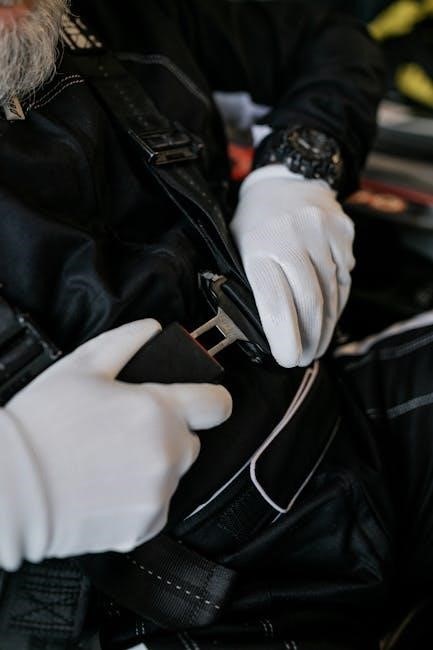The PIR sensor with manual override is a device that uses infrared energy to detect motion and has a manual switch to control the light, providing convenience and energy-saving features always available online.
Overview of PIR Sensor Technology
PIR sensor technology is based on the detection of infrared radiation emitted by objects, particularly human bodies. This technology is widely used in various applications, including security systems, lighting control, and home automation. The PIR sensor consists of a pyroelectric sensor, a lens, and a processing circuit. The pyroelectric sensor detects the infrared radiation and sends a signal to the processing circuit, which then triggers an alarm or turns on a light. The lens focuses the infrared radiation onto the pyroelectric sensor, increasing the detection range and accuracy. PIR sensors are known for their high reliability, low power consumption, and ease of installation. They are also relatively inexpensive compared to other motion detection technologies. Overall, PIR sensor technology has become a popular choice for motion detection applications due to its effectiveness and affordability. The technology continues to evolve with advancements in sensor design and signal processing.
Importance of Manual Override Feature
The manual override feature is a crucial component of PIR sensors, allowing users to have control over the lighting or security system. This feature provides flexibility and convenience, enabling users to switch the light on or off manually, regardless of motion detection. The manual override feature is particularly useful in situations where the PIR sensor may not be able to detect motion, such as when a person is standing still or in a area with low infrared radiation. Additionally, the manual override feature can be used to override the PIR sensor’s automatic mode, allowing users to keep the light on for an extended period. This feature is also useful for testing and troubleshooting purposes, as it allows users to isolate the PIR sensor and test its functionality. Overall, the manual override feature enhances the functionality and usability of PIR sensors, making them more versatile and reliable. It is an essential feature that provides users with more control and flexibility.
Wiring the Manual Override Switch
Connect the red wire to the switch and the black wire to the power source, securing connections with wire connectors for safe and proper installation always online available.
Connecting the Red Wire to the Switch
To connect the red wire to the switch, first locate the terminal on the switch where the red wire will be attached. Make sure the switch is in the off position to avoid any accidental connections.
Then, take the red wire from the PIR sensor and strip the insulation from the end of the wire, exposing the copper core.
Next, insert the exposed copper core into the terminal on the switch and secure it with a wire connector.
Ensure the connection is tight and will not come loose over time.
It is also important to check the wiring diagram for the specific PIR sensor model to ensure the correct connection is made.
By following these steps, the red wire can be safely and properly connected to the switch, allowing for manual override of the PIR sensor.
The connection should be secure and reliable, providing a safe and efficient way to control the light.
Proper connection is crucial for the correct functioning of the device.
Connecting the Switch to the Black Wire
To connect the switch to the black wire, locate the other terminal on the switch and the black wire from the power source;
Ensure the power is off to avoid any electrical shock or injury.
Take the black wire and strip the insulation from the end, exposing the copper core.
Insert the exposed copper core into the terminal on the switch and secure it with a wire connector.
Make sure the connection is tight and will not come loose over time.
It is also important to check the wiring diagram for the specific PIR sensor model to ensure the correct connection is made.
The black wire is usually the negative or ground wire, so it is essential to connect it correctly to avoid any damage to the device.
By following these steps, the switch can be safely and properly connected to the black wire, completing the manual override circuit.
Proper connection is crucial for the correct functioning of the device and to ensure safety.
The switch can now be used to manually override the PIR sensor, providing control over the light.
Manual Override Mode
The manual override mode allows users to switch the light on for longer periods using the isolation switch at night always with specific instructions online available.
Activating Manual Override Mode
To activate the manual override mode, the user needs to switch the power off and on twice within a short period, typically three seconds, this will put the PIR sensor into manual mode.
The process involves switching the power off and then on, then off again and finally on, this sequence of actions will activate the manual override mode.
This mode allows the user to have more control over the lighting, and it can be useful in situations where the automatic mode is not desired.
The manual override mode can be activated at night using the isolation switch, this provides an additional level of control and flexibility.
The PIR sensor will remember the manual override mode until it is reset or the power is cycled again.
The activation of the manual override mode is a simple process that can be done by anyone, and it does not require any special technical knowledge or skills.
The manual override mode is a useful feature that can be used to customize the behavior of the PIR sensor to suit specific needs and requirements.
Using the Isolation Switch
The isolation switch is a crucial component in the PIR sensor with manual override, it allows the user to isolate the sensor from the power source.
This switch is used to activate the manual override mode at night, providing an additional level of control and flexibility.
The isolation switch is typically used in conjunction with the manual override mode, it helps to prevent the sensor from being triggered by motion when it is not desired.
The switch is designed to be easy to use and understand, it is usually a simple on/off switch that can be operated by anyone.
The isolation switch is an important safety feature, it helps to prevent accidents and ensures that the sensor is used in a safe and controlled manner.
The switch is also used to reset the sensor to its default mode, this can be useful in situations where the manual override mode is no longer required.
The isolation switch is a reliable and efficient way to control the PIR sensor, it provides a high level of flexibility and customization.
PIR Sensor with Manual Override Instructions
Follow the instructions carefully to install and operate the PIR sensor with manual override function correctly always online now available.
Understanding the ST16 Infrared Motion Sensor
The ST16 Infrared Motion Sensor is a device that utilizes infrared energy to detect motion and is often used in conjunction with a manual override feature. This sensor is designed to provide automation, convenience, safety, and energy-saving functions. The product uses a sensitivity detector and an integrated circuit to enable these features. The ST16 sensor is typically used in lighting applications, where it can detect the presence of a person and turn the lights on or off accordingly. The sensor has a detection field that is triggered by infrared energy from body heat, allowing it to accurately detect motion. The ST16 sensor is also designed to be practical and easy to use, making it a popular choice for a variety of applications. Overall, the ST16 Infrared Motion Sensor is a reliable and efficient device that can provide a range of benefits when used with a manual override feature. It is a useful tool for anyone looking to add automation and convenience to their lighting system.
Utilizing the Sensitivity Detector and Integrated Circuit
The sensitivity detector and integrated circuit are key components of the PIR sensor with manual override. The sensitivity detector is responsible for detecting the infrared energy emitted by a person, while the integrated circuit processes this information and sends a signal to the light to turn it on or off. The integrated circuit is a complex electronic component that enables the sensor to function accurately and efficiently. By utilizing these components, the PIR sensor with manual override can provide reliable and consistent performance. The sensitivity detector and integrated circuit work together to enable the sensor to detect motion and adjust the lighting accordingly. This technology is designed to provide energy-saving and practical functions, making it a popular choice for a variety of applications. The combination of these components allows the PIR sensor with manual override to be a useful tool for anyone looking to add automation and convenience to their lighting system, providing a range of benefits and advantages.



Leave a Reply
You must be logged in to post a comment.